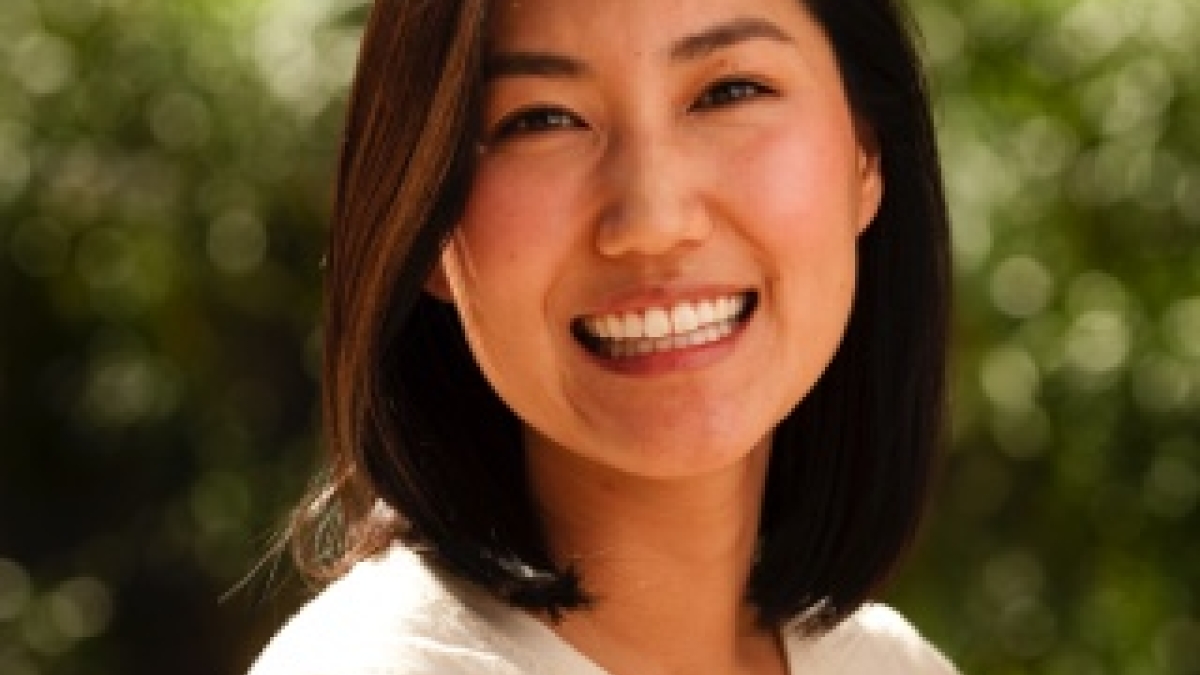ASU fellow helps parents help teens by identifying barriers at home

ASU postdoctoral fellow Joanna Kim.
Joanna Kim, an Arizona State University postdoctoral fellow in the Bridges Lab under the mentorship of Provost Nancy Gonzales, recently published a paper in Implementation Research and Practice about implementation challenges for evidence-based interventions, such as the Bridges program.
The Bridges program is a family-based program for middle school students and their parents using evidence-based strategies to increase school engagement and to prevent common teen problems, such as alcohol use or risky sexual behaviors. This four-session program is delivered separately to parents and teens, and complemented by joint family sessions for families to check in about what was discussed separately.
“We research the intersection of culture and family processes, what that means for child/adolescent development and developmental trajectories,” Kim said. “We study preventive interventions and their effectiveness, and a very big part of the lab also focuses on dissemination and implementation.”
Kim found that often, participants will be highly motivated for the program and have voluntarily signed up, and yet there will still be obstacles that prevent them from completing it as it was designed. These barriers include daily stressors like chores and cooking, how much the child wants to participate, or external factors like being forced to work late or having multiple jobs.
“Researchers historically created these intervention programs in a laboratory setting without thinking as much about the end delivery of the program, such as what are the obstacles that are happening when parents are trying to do the intervention?” Kim said.
In order to answer that question, Kim examined worksheets that caregivers filled out during their participation in the Bridges intervention. She focused on caregivers’ answers that illustrated challenges they experienced when trying to practice assigned intervention skills at home.
“Over 85% of caregivers reported one or more home practice challenges. Challenges fell into six domains: daily stresses; cognitions/beliefs about the intervention/practice; caregiver wellness/regulation; adolescent responsiveness; relevance/acceptability of intervention or assignment; and external barriers to practice,” Kim said.
These challenges are important, as they can be an obstacle for the adolescent to experience parts of the intervention that are proven to be effective.
“As much as parents will hear the research and know it in their hearts and minds, if they don't actually follow the specific technique with their kids — such as providing praise or avoiding punitive or inconsistent discipline — they're still not able to deliver the intervention effectively,” Kim said.
One of the aims of the research was to codify or systemize assumptions that interventionists often have about what gets in the way of intervention effectiveness.
“A lot of times, we have these assumptions about what makes home practice hard, and we have anecdotal evidence from group sessions, but this research was a way that we can systematically get a sense of what people outside of the research groups are saying,” Kim said. “A lot of them reported about expected daily stressors, such as not having enough time or getting distracted at home. Examples like, 'I have four kids, I can't just focus on the one kid when I have three others running around,' are really helpful for researchers because they are all actionable items that you can plan around.”
Kim hopes that by better understanding and identifying barriers to implementation during the creation of programs, researchers will be better able to impact the lives of children and families.
“What is really important to note is that even with these obstacles to implementation, we are seeing statistically significant improvements in these children from the interventions already. By addressing these concerns, we only stand to make greater strides in their lives,” Kim said.
More Science and technology

ASU professor breeds new tomato variety, the 'Desert Dew'
In an era defined by climate volatility and resource scarcity, researchers are developing crops that can survive — and thrive —…

Science meets play: ASU researcher makes developmental science hands-on for families
On a Friday morning at the Edna Vihel Arts Center in Tempe, toddlers dip paint brushes into bright colors, decorating paper…

ASU water polo player defends the goal — and our data
Marie Rudasics is the last line of defense.Six players advance across the pool with a single objective in mind: making sure that…

